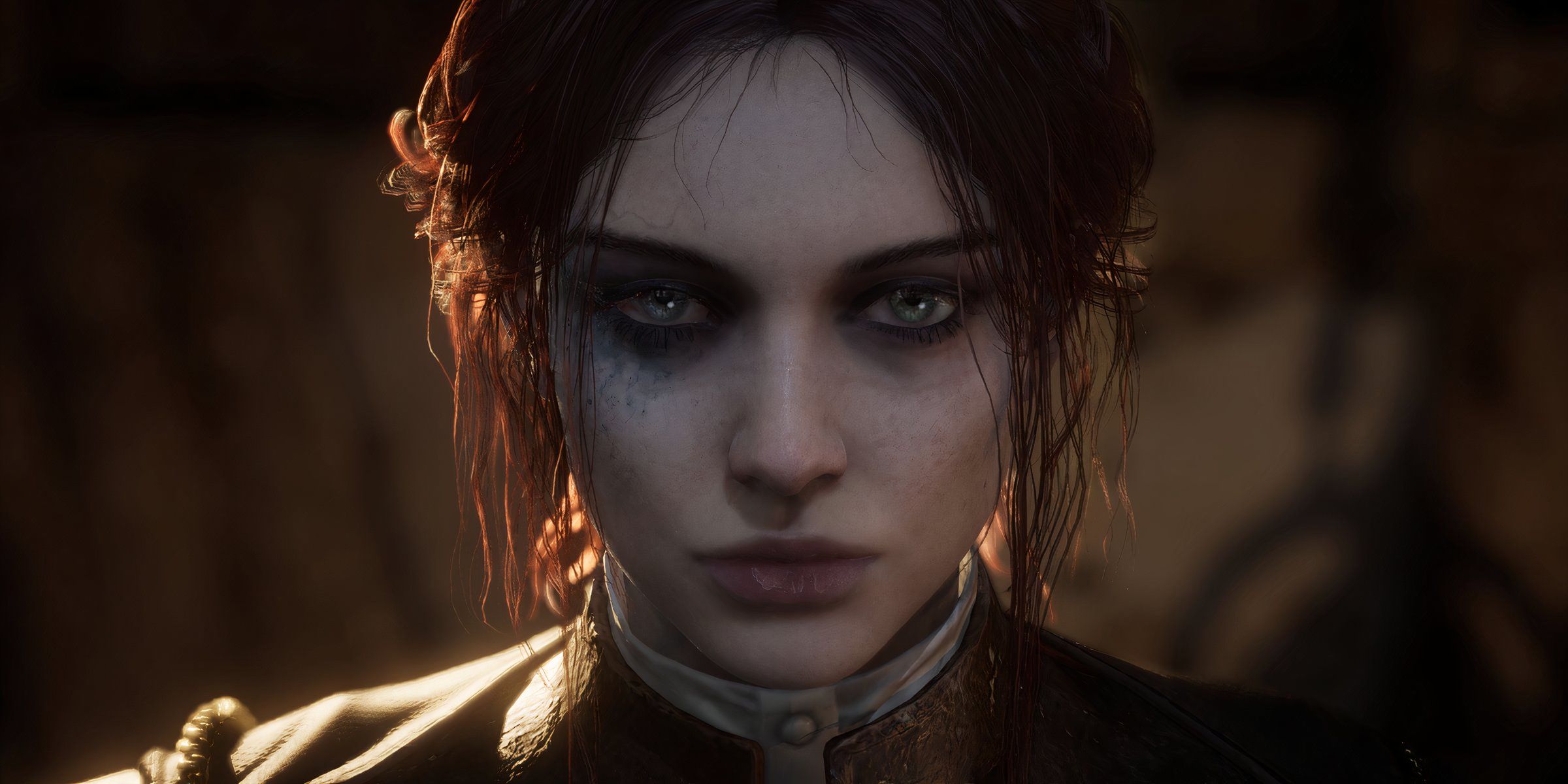Spoilers ahead of Lies of P: Overture.
In a game full of grotesque puppets and corrupted monstrosities, Lies of P’s Overture standout isn’t a final boss, but Lumacchio, whose presence fractures every sense of security. Lumacchio stands out because he hunts in psychological pulses and anchors terror in anticipation. He bleeds into the environment with a flicker at the edge of the player’s peripheral vision, a blade that interrupts recovery animations, and a whisper that lets the player feel that they’re not alone in the dimly lit alleys of Krat.
All this creates a strategic panic. He manipulates, and he never oversells. Unlike spectacle-driven Soulslike bosses, he works more like Resident Evil 3’s Nemesis crossed with Bloodborne’s Brainsucker. His approach is heard before the player sees him, and his entrances are always off-axis, like a glitch in the world’s logic. This is also exactly what prevents Lies of P’s core theme of corrupted puppetry from spiraling out of control. And then there’s Neil Newbon, who has played the character as if Lumacchio was designed for him.

Related
Lies of P: Overture Broke Me, But Not Because of Difficulty
Lies of P: Overture is debatably much harder than the base game, but it also tells a much sadder story that is accentuated by character-driven drama.
Neil Newbon’s Physicality as Lumacchio Reimagines Lies of P Boss Encounters
Mechanically, Lumacchio is a perfect foil to aggressive builds: unpredictable in movement, fond of ambushes, and designed to exploit stamina mismanagement. Neil Newbon’s performance capture, on the other hand, transforms that very Lumacchio from an elite enemy into an entity that overpowers even Markiona. Despite Newbon being known for deeply expressive characters like Astarion from Baldur’s Gate 3 and Karl Heisenberg from Resident Evil Village previously, the actor seems to have gone with a minimalist approach in Lies of P: Overture. And instead of just heavy dialogue, there’s micro-movements: twitches, skitters, lunges, all performed with predatory grace.
Plus, Newbon’s choreography in Lies of P is exactly what ensures that Lumacchio doesn’t behave like a puppet, but a stalker possessed by erratic cognition. This subtlety matters in a Soulslike, where most bosses rely on sweeping arcs and telegraphed phases. Lumacchio’s animation work, on the other hand, rejects traditional choreography. His jerky acceleration, sudden disengagements, and pathing that ignores traditional aggro logic keep the player in a state of reaction rather than prediction. All this makes Lumacchio a living contradiction and a frustrating one at that — elegant yet disjointed, aware yet mindless.
Lies of P: Overture’s Pacing Revolves Around Lumacchio
Lumacchio isn’t just in the Overture — he is the Overture. His sporadic appearances dictate the act’s tempo. The level design builds around the constant uncertainty of his arrival. He re-engages whilst backtracking. He heals himself and is tanky. This transforms the opening chapters from tutorial to gauntlet, not mechanically but psychologically. Even experienced Soulslike game players are forced into caution because of him, and it’s very easy to get stuck with Lumacchio.
Lumacchio Is a Study in Punishment Design
At first glance, Lumacchio appears crafted as a reactive, high-pressure skill check — but in practice, he enforces resource attrition over adaptive mastery. Players who approach him with aggressive, stamina-heavy builds will quickly realize he’s tuned to invalidate traditional risk-reward mechanics. Case in point: Lies of P‘s charged Fable Arts, such as the Pinwheel or Black Steel Cutter’s final combo, are routinely interrupted, despite their visual and mechanical commitment. Meanwhile, Lumacchio tanks through those hits and poises through damage while responding with combo strings that drain stamina before the player can even queue a dodge.
Phase two then amplifies this imbalance. His room-crossing lunges reset camera lock, pin players into geometry, and bait panic rolls that are punished with three-hit chains that track even through dodges. His healing mechanic then resets the damage curve, which can be frustrating, to say the least. His flurry attacks cancel quickly into follow-ups, and any stagger window offers only a brief window for counterplay unless the player has burned throwables, used Puppet String for crowd control, or equipped meta-perfect grindstones. It’s because of this that he’s the most troubling stalker boss, demanding patience, persistence, and vigilance in no small measure.

Lies of P: Overture
- Released
-
June 6, 2025
- ESRB
-
M For Mature: Blood and Violence
- Engine
-
Unreal Engine 4
- Number of Players
-
Single-player
- Steam Deck Compatibility
-
Playable
